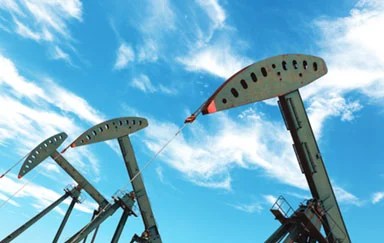Just this past weekend a worker died in the Alberta oil sands region near Fort McMurray. We can take lessons from this tragedy and remind ourselves to study our practices to ensure that corners are not cut and best practices are employed to assure workplace safety. This blog post speaks to safety issues in general, as we have no relationship with the project, operators, or individuals in the Fort McMurray accident.
When people are engaged in working spaces where danger exists, such as these oil patch workers, then engineers and safety managers need to be extra diligent in the application of appropriate procedures and technologies whether the spaces are open or confined. As a matter of fact, the Occupational Safety & Health Administration of the US Department of Labor (OSHA) reports 4,679 workers died on the job in 2014 (most recently reported data). To combat this, it is critical to plan, engineer, simulate, test, manufacture and support all with critical safety dimensions to them, to successfully protect our workers and our investments.

In the moments surrounding an accident, especially where life is lost, it is uncomfortable to think about the financial costs of such an event. It is right and proper to focus on the human toll and cost of such an accident. However, if we confront the possible real contributors or causes to accidents, it is not uncommon to find that a variety of financial factors may be in play. Insurers, regulators, owners, and other entities have varied interests and influence. These interests are not inherently in conflict; in fact when properly managed they work together to everyone’s benefit, especially those most in harm’s way.
When such an accident happens, there are numerous financial repercussions—loss of income and personal costs for those injured. Operational shutdowns and work disruptions for the employer. Fines and overhead costs might be incurred. Insurance premiums and lawsuits are possible. Remedy studies and investigations are often called for. Tremendous sums may be involved, regardless of the magnitude of the situation. So where to begin?
Expert training is always critical. Continuing education on the latest practices and technologies are essential and are mandated for many workers and firms. It is one of the most valuable investments associated with worker safety. Furthermore, the proper selection of technologies, materials, fabrication processes, etc. also begin with training. That includes formal education, on-the-job life experience, OSHA credentialing, and more. Advanced preparations can be made through the use of sophisticated and widespread engineering planning. This can include simulation, and advanced prove-out by applying laboratory techniques using state-of-the-art valves, regulators, and other hardware.
Additionally, advanced control technologies in particular, such as safety PLCs (see Safety/Programmable Controllers) and other regulating equipment are available to maintain safe conditions to protect workers. Proving out equipment in the lab rather than in the field can also save lives and money. Regulations designed to codify these best practices can be proven out in test cells, and also provide the insurers and regulators the certainty they need in order to know that best efforts are being practiced to protect our people.
To point the way forward, you can engage a firm like Re:Build Optimation to conduct a Hazard Analysis, including specialized Arc flash investigations and check for NFPA 70E compliance; detecting such risks and understanding the probability and potential severity of these and other events are definitely best practices in the safety world; and are available to all.
We can also utilize experienced engineering techniques that will take advantage of high pressure and high temperature testing, for instance, to mitigate this kind of accident and to protect the workplace by being able to craft systems with multiple-redundancy and other best practices. Applying certain manufacturing techniques, such as specialized welding, and select materials, and the use of specialized fittings and other proven components can be used to stack the deck in safety’s favor. High-speed data acquisition and monitoring technologies can be used to collect virtually instantaneous data that may help detect and shut down dangerous conditions before they occur.
Work with controls firms experienced in the safe management of complex and high-risk conditions, such as are found in oil and gas, chemical processing, food handling, and so on. Refer to the Control Systems Integrators Association (CSIA) and agencies (OSHA) geared to promoting world-class safety cultures (Safety Engineers) and tools to help locate practitioners to optimize your teams’ safety and the well-being of your business.
Looking to connect with an experienced team?
Look no further than Re:Build Optimation! We are excited to connect with you.